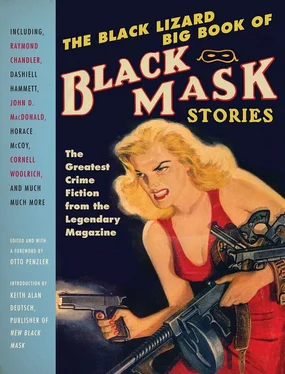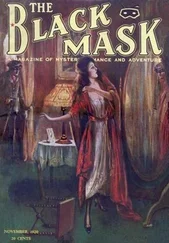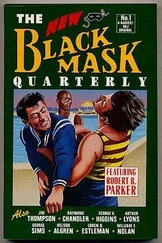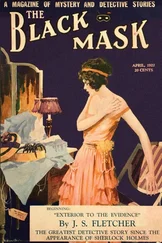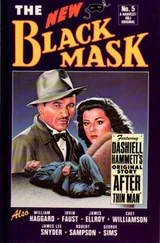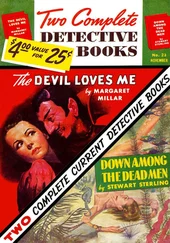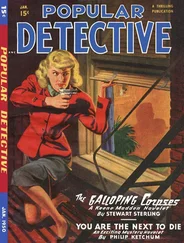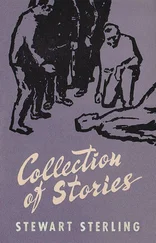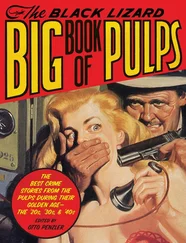In the late 1970s, when the Filipacchi Group (now Hachette Filipacchi Media) came to the United States from France to produce a doomed new edition of Look magazine, they bought Popular Publications from David Geller in order to acquire Argosy. Through mutual acquaintances in publishing, I met their international attorney, Didier Guérin, and after a number of talks, he made it clear that they wanted to sell a few of Popular’s publications, like Camera 35, which was still making money, and Railroad magazine, which had been the first special-interest pulp magazine started by Munsey in the 1880s. Amazingly, it was still making money. They did not know what to do with the pulps. So we made a deal. They agreed that despite my ownership of the name Black Mask through purchase from EQMM, they would transfer all interest, title, and goodwill in Black Mask, and all the copyrights to all the fiction and all the art, to me. They also transferred certain intellectual property rights to all the original Popular Publications pulps Henry Steeger had originated, as well as all the Munsey pulps Steeger had purchased in the 1940s. This acquisition included some Street and Smith pulps Popular acquired in 1949. In exchange I gave service and other considerations to the Filipacchi Group, which had assumed the name Popular Publications International when it purchased David Geller’s holdings. I also helped them sell Railroad magazine in return for my Popular intellectual property rights.
Since those days, I have licensed many stories from Black Mask for book publication. I initiated a Black Mask Web site, blackmaskmagazine.com, in 2000. In 2007, I licensed back to EQMM, now published by Dell, the right to run a Black Mask department. Christmas 2008 saw the first CD issue of Black Mask Audio Magazine, full-cast dramatizations with sound effects and music of classic Black Mask tales produced with Blackstone Audio. Included will be a full-length performance of The Maltese Falcon authorized by Dashiell Hammett’s estate.
For readers interested in how the stage was set for the appearance of Black Mask magazine in 1920, here are a number of observations and facts about fiction magazines in America that may put my personal history in perspective.
Prior to the Civil War, magazines, like newspapers (which also published fiction), were local affairs primarily associated with cities. For example, all of the magazines that published Edgar Allan Poe’s fiction during the 1830s and 1840s were sold through subscription lists and published for readers near cities like Baltimore, New York, and Philadelphia. At most, such publications had no more than three thousand subscribers.
Even Charles Dickens, whose novels were serialized in magazines and who became the first popular fiction sensation in America in the 1840s, reached only a small segment of the American population.
It was not until the American Civil War that literacy in the United States blossomed to numbers that would support a true mass market for magazine fiction. But it was the dime novel (five-and ten-cent weekly libraries of rough-paper books), and not magazines, that first found a regional, and then a national, audience for fiction during the last half of the nineteenth century.
Although it is primarily the American West that provides the mythology for most dime-novel fiction, the second-favorite theme of these first mass-market American fiction publications was crime and detection in the great cities, particularly New York. These two major themes of nineteenth-century dime-novel fiction, those that feature the American cowboy hero of the bright plains, or those that feature the American detective hero of the dark cities, became the two great streams of popular fiction and popular culture in twentieth-century America.
The longest-running American detective hero, Street and Smith’s Nick Carter, got his start in an 1886 dime novel that was so popular the character was featured in a weekly dime-novel series, the Nick Carter Library. In 1915, it became Street and Smith’s first mystery pulp, Detective Story Magazine. Similarly, in 1919, the dime-novel series starring the iconic hero Buffalo Bill, the New Buffalo Bill Weekly, became Street and Smith’s first Western pulp, Western Story Magazine.
But it was not Street and Smith that killed the dime novel. It was a genius of American magazine publishing, Frank Andrew Munsey (1854–1925), who invented the American pulp fiction magazine and ended the reign of the crudely designed dime novel. In 1896, Munsey’s Argosy magazine became the first true pulp, switching to an all-fiction format of 192 pages on seven-by-ten-inch untrimmed paper. With a cover price of less than half (ten cents) of more exclusive (twenty-five-cent) slick-paper magazines, circulation grew like a revelation, and by 1903 Argosy sold half a million copies per month.
Munsey was the first to take the new high-speed printing presses to print on inexpensive pulp paper to produce large runs of genre-fiction magazines at discounted cover prices that attracted a large working-class readership that could not afford and was not interested in the content of more expensive slick-paper magazines. Munsey also saw that large circulation could attract advertising as a major source of publishing income. The Argosy for December 1907 provides a wonderful history of the magazine, and of Munsey’s publishing struggles, “told” by Munsey.
Modern magazines, both pulps and slicks, arose at the turn of the twentieth century as a handmaiden to technological advances in printing and marketing. Magazines could be produced as designed objects with color covers, line drawings, and half-tone images to create a graphic editorial environment to sell their content. They also became a powerful emotional and visual marketing environment to sell new brand-name products.
Along with other mass-market consumer products emerging at the beginning of the twentieth century, new national methods of distribution were developed for the widely popular pulp fiction magazines. Although subscriptions were still important, pulp magazines became impulse items, bargains of inexpensive entertainment with brightly painted, four-color covers beckoning readers at newsstands, drugstores, and other outlets all across America.
Munsey’s innovation became an entire pulp magazine industry and made many publishing fortunes. Munsey established the practice of closing magazines, or changing their content, as soon as they became unprofitable. He would quickly start new ones in their place. At first his pulps like Argosy and All-Story magazine featured all types of fiction. But in 1906 he began publishing Railroad Man’s Magazine, the first special genre pulp magazine, which featured only railroad stories. Eventually his company, and those that followed his example, produced detective, Western, love, adventure, horror, and special-interest fiction pulps of every stripe imaginable. Whatever genre sold was imitated. Pulp readers wanted escapist entertainment that was simple, fast reading, exciting, and graphically illustrated. In time there were over three hundred different shifting pulp fiction titles of all genres.
Of all the pulp fiction magazine titles collected by the Library of Congress from all issues on copyright deposit, only three titles were considered such “extremely rare and valuable” contributions to the history of American culture that they were transferred to special holding facilities in the Rare Books and Special Collections Division of the Library of Congress: Amazing Stories, Black Mask magazine, and Weird Tales.
Читать дальше
